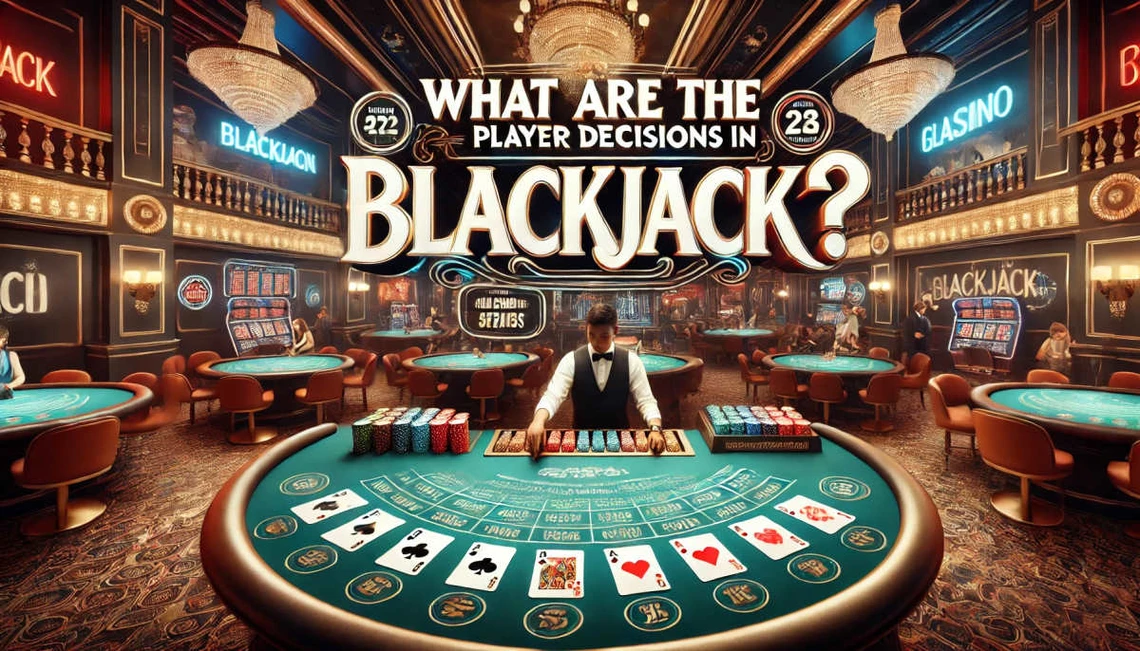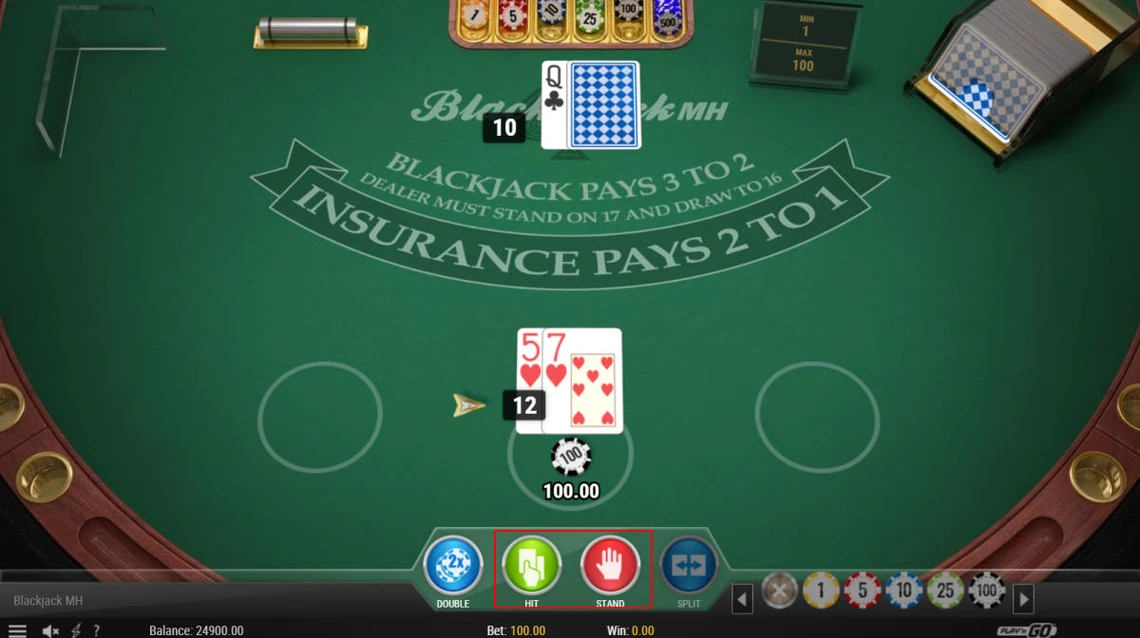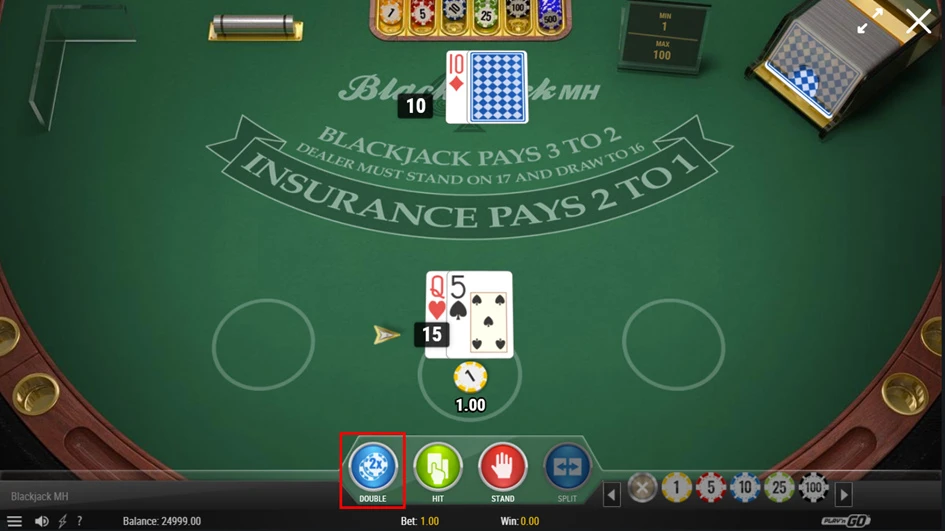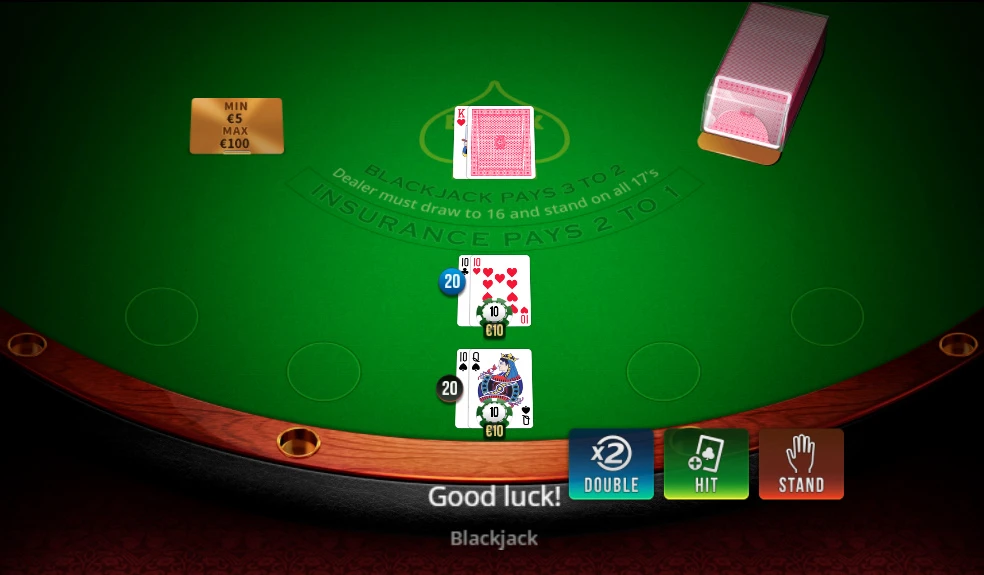
What are the Player Decisions in Blackjack?

Blackjack is one of the most popular casino games of all time. It is a card game that is played by millions of people around the world. This game relies on a good strategy, sound decision-making, and a touch of luck. The decisions you make will play a massive part in your long-term success. However, not everybody understands the different moves available and when they should use them. This guide will explain each of those decisions and how making the right one can aid your success.
What is a Blackjack Decision?
As a hand of Blackjack plays out, players will have a range of moves, actions, or decisions they can take. For example, a player can stand, hit, split, surrender, double down, or take insurance, depending on the current situation. Below, you will see the different decisions you can take during a hand of Blackjack:
Hit or Stand

Hit
Alongside ‘Stand,’ ‘Hit’ is the most common decision associated with Blackjack. It is the decision to take another card. As most of you will know, the aim in blackjack is to get as close to 21 as possible without busting. Face cards are worth 10, the Ace is worth 1 or 11, and all other cards have their face value. You start with two cards and then have to make a decision depending on the value of that hand. If your hand value is 6, for example, you want to ‘Hit’ to receive another card. If that card is a 4, then you will want to ‘Hit’ again. As you get closer to 21, that decision becomes more difficult.
- The main risk of hitting in Blackjack is the potential to bust or exceed a hand value of 21. As you draw additional cards in hopes of improving your hand, each new card increases the chance of going over 21.
Stand
This is the opposite of ‘Hit.’ ‘Stand’ is the decision you make when you do not want to take any more cards and feel your best chance of success is to stand on the hand value you currently hold. As an example, if your first two cards are face cards, that gives a hand value of 20. There is no point in deciding to ‘Hit’ as the only card that helps you is an ace. All others will bust your hand. So, you definitely ‘Stand’ in that situation.
- The main risk of standing is that your hand might not be strong enough to beat the dealer, leading to a potential loss if the dealer's hand is better.
Double Down

The ‘Double Down’ is a risky decision to take but one that will increase your payout if made at the right time (and with a slice of luck). Essentially, the Double Down allows you to double your initial bet in return for just one more card. You cannot hit again and must stand. The best time to make this move is when you have a strong starting hand of 10 or 11. If your next card is a face card, you stand a great chance of winning.
- The main risk of doubling down is that you commit to a larger bet for just one additional card. If that card doesn't improve your hand sufficiently or leads to a bust, you could lose more money than with a standard hit.
Split

The ‘Split’ is a decision you can make if your two starting cards are of the same value. For instance, if you land two 5s, you can split them into two separate hands. You play both hands independently of each other. This gives you two chances to beat the dealer. Some casinos offer different rules, however. Some will not let you split aces, while others may require all 10-value cards to be the same suit.
- The main risk of splitting is that it can lead to two weaker hands rather than one strong one. If the new hands don’t improve or result in busts, you might end up losing more than if you had kept the original hand.
Surrender (Early or Late)

Although the surrender rule is fairly uncommon, if you find a table that allows it, this decision can save you plenty of money down the line. There are two types of surrender, early and late. The early surrender allows you to throw away your hand in return for half your ante back before the dealer checks his hand for a natural Blackjack. The late surrender works differently. You can throw away your hand in return for half your ante back after the dealer checks his card for a natural blackjack. If the dealer holds a natural, you lose your full bet. If not, you receive half back.
- The main risk of surrendering is that you forfeit half your bet, which means accepting a partial loss. You give up your chance to potentially win the hand or recover your full bet.
Insurance

The final decision you can make is when the dealer’s face-up card is an ace. You can place an insurance bet that will pay you 2:1 if the dealer’s other card has a value of 10. This is a good bet to place in most circumstances as it protects you against the dealer winning with a natural.
- The main risk of taking insurance is that it’s a side bet with a high house edge. If the dealer doesn’t have a Blackjack, you lose the insurance bet, adding to your overall loss.
How to Make the Right Decisions in Blackjack?
The best way to ensure you make the right Blackjack decisions at the right time is to play a basic Blackjack strategy. For instance, a basic strategy tells you to double down with a hand value of 11 and to avoid splitting 10-value cards. Simply put, learn basic Blackjack strategy and stick to it when playing.
Summary of the different player decisions
|
Player Decision |
Description
|
Main Risk
|
|---|---|---|
|
Hit |
Take another card to get closer to 21, but risk busting as you approach 21.
|
There is a chance of busting by exceeding 21.
|
|
Stand |
Stop taking cards when your hand value is high, avoiding the risk of busting.
|
The hand may not be strong enough to beat the dealer.
|
|
Double Down |
Double your bet in exchange for one more card, typically with a strong hand of 10 or 11.
|
There is a possibility of losing more if the additional card does not improve the hand.
|
|
Split |
Split a pair of identical-value cards into two hands, playing each independently.
|
The result could be two weaker hands.
|
|
Surrender |
Forfeit your hand for half your bet back, either before or after the dealer checks for Blackjack.
|
Half the bet is lost, and the chance to win or recover the full bet is given up.
|
|
Insurance |
Place a side bet when the dealer shows an ace, paying 2:1 if the dealer has a 10-value card.
|
The insurance bet may be lost if the dealer does not have a Blackjack.
|
What Next?
As you can tell, you have many decisions available to you when playing Blackjack. You must understand each decision and learn when to use them. If you make wise decisions, you will enjoy greater success in the long term.

Author
Content Writer